Disclaimer: This is post is 100% about stuff I didn't do. Please lower your expectations accordingly.
Expectations lowered? Great!
My own electric vehicle
I've been interested in DIY electric vehicle conversions ever since I found out they were a thing - probably around 2007 when lithium batteries were still rare, exotic, and eye-wateringly expensive. I've been lurking on the Australian Electric Vehicle Association forums for about that long.
In 2021 I finally found myself with a fortunate combination of time (leaving a pretty intense full-time job), space (a house in the country with a decent shed), and the luxury of enough "spare" money that this didn't seem completely impossible.
The big difference compared to 2007 is that, even here in Australia, factory produced electric cars are becoming more common. There are communities like openinverter where folks figure out how to repurpose OEM components into converted vehicles. There is a group All Electric Vehicle Parts Australia (unfortunately on Facebook) where members watch salvage auctions for interesting electric car wrecks to devour.
Buy one from a shop?
If you can buy factory EVs, is doing your own conversion even worth it these days? It's a good question, especially as the budget for a modest EV conversion can exceed the used price of an older model like Nissan Leaf or Mitsubishi iMIEV. That's without even factoring in the extra time and effort.
There's still a few reasons I want to convert something:
- I like the idea of building something myself, understanding it, and being able to maintain it.
- I reckon salvage electric vehicles in Australia are ridiculously undervalued, except for maybe Teslas. It's a waste that so much useful engineering is being scrapped because no-one can re-purpose any of it (not that our government is exactly helping).
- I don't particularly like driving very modern cars. Yes, they are safer and quieter and they probably have voice activation, multimedia integration, multiple zone climate control, and will even steer you back into your lane if you stop paying attention. I also find most of them really uninspiring and bland.1
- Modern cars have too many computers in them! Like a lot of people who've spent significant time around computers, I am suspicious about their overall utility. If you think you can guess how many computers a modern high-end car has, it's likely ten times more than that. What do they all do? What software do they all run? You'll never know...
Goals
So what are my goals here?
- Learn something about EV technology, and contribute something to the open source EV community.
- Get a useful, comfortable, and safe car that we can use as a "daily driver".2
- Be able to make a round trip from Central Victoria to Melbourne when needed. This about 120km each way, not a massive challenge but it does push the budget up a bit as our regular trips are all less than 60km, many less than 10km.
- Not spend too much money.
I really loved the idea of building an electric ute, but decided my budget wouldn't stretch to the batteries or motor I'd need to get a comfortable 250km of range (compared to cars, utes are both heavy and un-aerodynamic).
Outlanderish
In June 2021 I bought a crashed 2019 model Mitsubishi Outlander Plugin Hybrid ("PHEV") at an online salvage auction:
Plugin hybrids must exist only because batteries are still so expensive. They have so much "stuff" in them:
- All the parts of an electric vehicle (powertrain, charging system)
- All the parts of a combustion engine vehicle (engine, fuel tank, second cooling system, etc)
- Some kind of complex transmission that allows both power sources to turn the wheels, with a complex control system to make that work smoothly.
- A small high voltage battery pack (all-electric range of the Outlander is about 50km when new).
Look how full this engine bay is:
It all costs less new than many battery electric vehicles, even though it contains so many more things. I can only figure the manufacturers save that much money with the smaller battery!
This Outlander had been driven for a couple of good years, but then it seems to have hit a large kangaroo at speed near Romsey here in Central Victoria. The car fired all three front airbags and the front caved in as designed, bending a front chassis member. This was enough to trigger a Statutory Write-Off event, meaning that car could never be registered in Australia again:
As a result, after retailing for around AU$47,490 in 2019 this wreck was bought two years later for a smidge under $3,000 plus transport costs. Absolutely wild.
Outlander Plan
I was excited about the Outlander PHEV because it contains not one but three electric motors! There are two in the front:
Technically one is a motor and the other is a "generator" driven by the petrol engine, but they're both essentially three phase electric motors. The grumpy Irish champion of re-purposed OEM EV parts and open source goodness, Damien Maguire, has a video demonstrating how to spin each of them.
The third electric motor is in the rear, integrated with a fixed gear transmission ("reduction gear" in EV terminology):
This is how the Outlander is All Wheel Drive, there is no driveshaft between front and rear but instead an electric motor to drive the rear wheels.
The amazing openinverter community had already figured out how to operate pretty much all the Outlander's EV parts (see wiki). All of the main components are controlled over CAN bus, and the CAN message formats are already documented!
Of course, performance from the Outlander electric motors isn't going to be Ludicrous. The front motor is rated for 60kW power 135Nm torque, and the rear 60kW power 195Nm torque. It should be possible to push this a little higher in a converted car: 60kW is almost 5C for the Outlander's stock 12.8kWh battery pack so it's likely the battery is the limiting factor (more on this below). However, as far as I know no one has tried this and documented it yet, so we might be stuck with the stock power level if using the stock inverter (motor controller).
Vehicle logs
Even though the open source community already has these motors spinning, I took a bunch of my own CAN logs. The last thing I wanted was to realise that I couldn't make something work, with the car pulled to pieces and no reference to fall back to. Hopefully these logs are useful for other folks, too.
Getting the car to move also meant figuring out how to clear the fault codes triggered in the crash. On arrival the car wouldn't even come out of Park. That process is documented here.
A while later, as an additional distraction, I went through and figured out how the "Cell Management Units" in the battery pack can be given new ID numbers. Hopefully this solves one more small piece of the puzzle when re-purposing them.
Wrecking sucks
The downside of buying a whole car is that you have to work out what to do with the rest of the car. I stripped the body down to a shell, and started selling off parts to people.
Cosplaying as a wrecker for a hobby left with me a new appreciation for the vehicle wrecker business model. The way I see it, most wreckers are time poor and space rich - so they park each car in a field and only take a part out when someone wants to buy it. If you don't have the spare space (and I don't), then you need to do all that work up front. This means removing parts that you may not ever sell.
Nevertheless, by now most of the Outlander has gone to new homes and those bits are keeping other vehicles on the road. This makes me happy, and the income has offset the cost of the salvage vehicle by a good amount (provided you don't count any of the time spent, if you measure time then this is definitely a hobby you'd do for the love of it and not any kind of sensible business!)
The body shell and the last few panels and glass went to the local wrecker. Hopefully he took the doors off before the rest went to the crusher for recycling, who knows.
I still have a few bits. If anyone needs Mitsubishi's special hybrid version of the 4B11 petrol engine then get in touch - I've got one to sell cheap!
But yeah, what next for my EV conversion plans?
Batteries
As hinted already, batteries are a limiting factor for most EV conversions. There are three key limits: weight, available power, and cost. They're also the part of the EV most likely to kill you or catch fire, so you don't want to half-ass it!
Weight is a hard limit. In Australia, all road-going vehicles have a GVM ("gross vehicle mass") which means "the car cannot ever weigh more than this". The official EV conversion document (catchy name of VSB 14 NCOP 14 "Guidelines Electric Drive") has the formula:
- Take the tare weight of the vehicle (i.e. what it actually weighs when converted but empty).
- Add 81.6 kg per passenger including luggage (the guide somewhat cheekily recommends allowing more due to "the size of the Australian population").
- Add any other weight allowances for normal usage.
This total must be less than the original GVM weight before conversion. Replacing a petrol or diesel engine with an an electric motor can reduce the weight by one or two hundred kilos, but adding a battery pack may add several hundred kilos! This is before even thinking about weight distribution and where to safely install all those batteries...
Available power is also a quick way to dampen any expectations about building a lightweight rocket on the cheap. Batteries have a specification called a "C rating", which is how much power they can deliver relative to their capacity. If you have a massive 100kWh capacity battery and it delivers 50kW into a motor then this is 0.5C (50 ÷ 100). As mentioned above, if the Outlander puts 60kW from its small 12.8kWh battery into its electric motor then this is 60 ÷ 12.8 = 4.6C. A lot of batteries, especially cheaper ones, aren't rated for more than 1C.
This is why you'll often see factory EV specifications where the higher range variant has a higher maximum power rating. The motor and power electronics may be exactly the same, but adding 25% more battery capacity means the motor can also put out 25% more power with the same battery "C rating".
Cost is of course the other factor for most of us. I looked at many different options, but was leaning towards buying new cells from China made by a battery manufacturer called EVE (亿纬锂能). A 30kWh battery pack of EVE LF105 cells wouldn't be too expensive (hoping less than $10,000AUD delivered) and would weigh under 200kg. The cells are specified for 1C continuous power draw with a peak of 3C for 30 seconds. In a 30kWh battery pack this means 30kW continuous power and 90kW peak for 30 seconds. This isn't fast, but it seemed acceptable.

(Photo courtesy EVE Energy Co. alibaba store.)
Car choices
I was looking for an affordable comfortable car that I liked driving, that wasn't too fast to begin with (so it wouldn't feel too slow as an EV), and that had reasonable safety features. The GVM had to be high enough relative to the car's original weight that it could get a few hundred kilos heavier without losing any passenger seats.
EV conversions are often done on older classic cars. They can be special and maybe even unique, but also relatively simple mechanically and electrically - no computers! However, I wanted dual airbags as a minimum safety feature in a daily driver. This rules out most classics and rules in some amount of complexity. I'm hoping that my experience with firmware and electronics will allow me to manage the more complex electronics of a newer car, although this remains to be seen...
To make things trickier, like many folks I was starting a car project in the second year of a pandemic where used car prices in Australia had rocketed up, particularly for interesting cars. Some vehicles that I'd been thinking about converting were suddenly well out of my budget (ohai, Mazda RX-8!)
Alfa 147
Look, I don't want to talk about this Alfa. I bought it unseen during the mid-2021 Victorian lockdown. The specs looked good on paper, I figured the rough parts could be patched over. I don't want to talk about it. 😅
Peugeot 406
Not a conventional choice, but I had one of these cars years ago and loved it. It's comfortable and smooth to drive, the turbo diesel engine means it's not fast to begin with, reasonably safe, and it has some nice features without being a cybernetic nightmare.
It also helps that Australian 406 sedans have a GVM of 1950kg and only weigh 1335kg, so there's a lot of spare weight allowance for batteries. My back of the envelope calculations suggested that after the diesel bits came out then I could add at least 412kg of EV parts to it, while keeping all five seats.
The stock power rating is 81kW 250Nm of torque, so no too far from the Outlander rear motor specs (and the electric motor won't have the narrow turbo diesel power band).
I bought a very tidy white turbo diesel model from New South Wales, and after the alternator blew up moments later it was trucked down to me by the incomparable Jojo of Get My Ride towing.
After a few more repair jobs I had it registered as a diesel car in Victoria:
Look at its majesty!
I also liked the idea of converting an "HDi" turbo diesel from this era, even if it ran fine. Although they're super fuel efficient, pre-particulate-filter diesel engines are a nightmare for human respiratory health. Especially if you like to put your foot down sometimes!
The "Substandard Leaf Trap"
I have an inexplicable affection for the Peugeot 406, but I felt a creeping worry that I'd be making a substandard Nissan Leaf. If I'm going to spend many hundreds of hours and more money than a decent Nissan Leaf sells for used, I should be sure that what I make compares favourably to that!
Yes it'd be neat to build something unique myself, but the result should be fun! If the extra weight, hacked electrics, and moderate power level made the 406 boring to drive then I'd have done a lot of work for not much result.
I don't have an answer for whether that would have been the case or not, as a chance purchase led me to a completely different plan. I'm writing this post a bit late in time: the Peugeot 406 has already been sold unmodified. It's back in New South Wales in the good care of a very friendly airline pilot and Peugeot enthusiast.
Long-term readers may recognise that this was why I was hacking around with a BMW gear selector, and also the reason I don't need that selector any more.
So, after this huge waste of time and money, what's the new plan? More on that, soon...
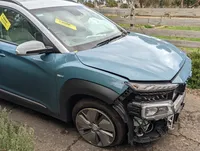
-
Tesla owners, please don't @ me. I'm glad you like your shiny intelligent future car with unimaginably sophisticated functionality and a ginormous touch screen, but it's not for me. ↩
-
Thankfully no one in our household has to drive every day, but you get the idea. Not only suitable for special occasions or "Sunday drives". ↩
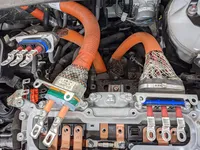
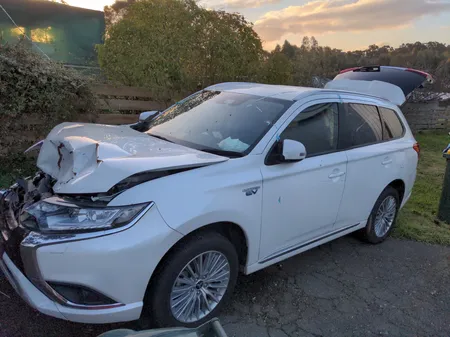
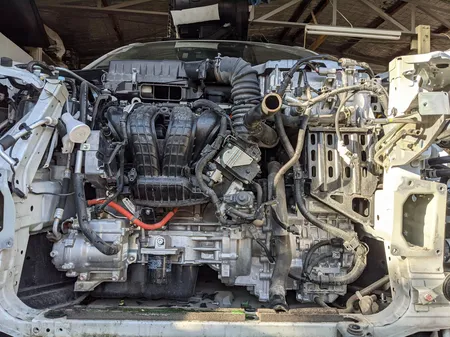
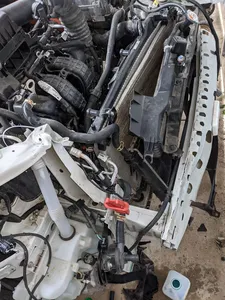
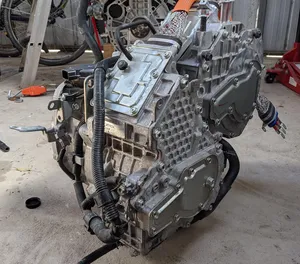
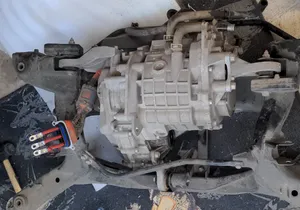
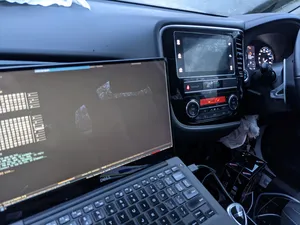
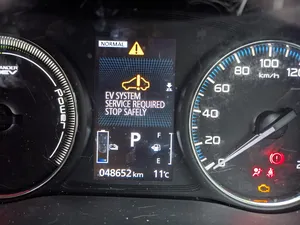
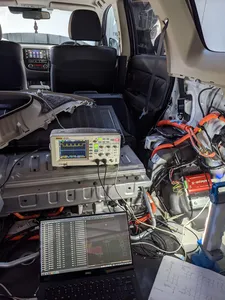
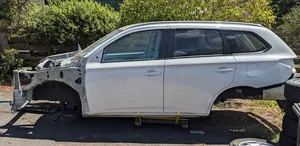
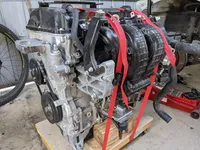
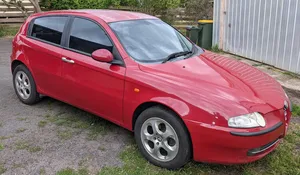
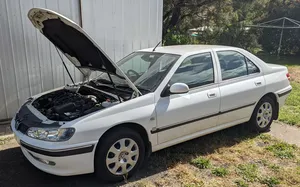
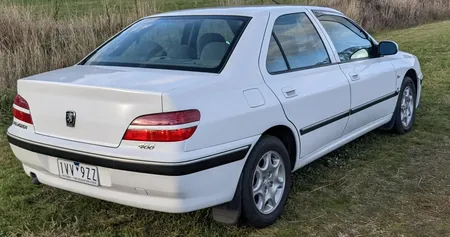
Thoughts on “Electric Vehicle Conversion (Part Zero)”